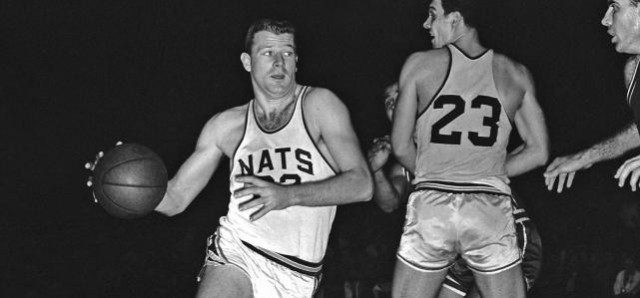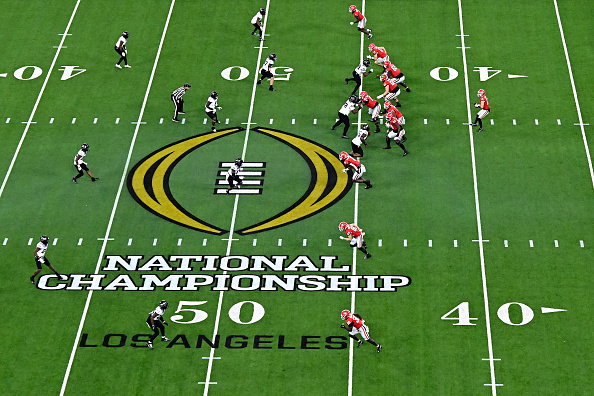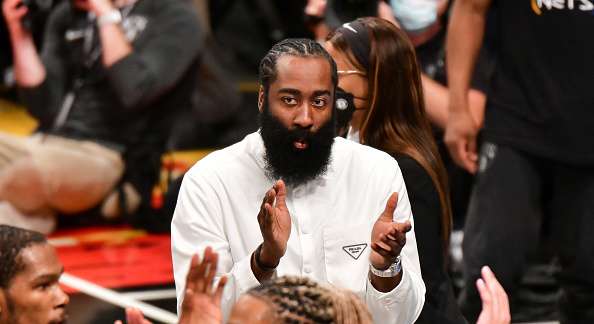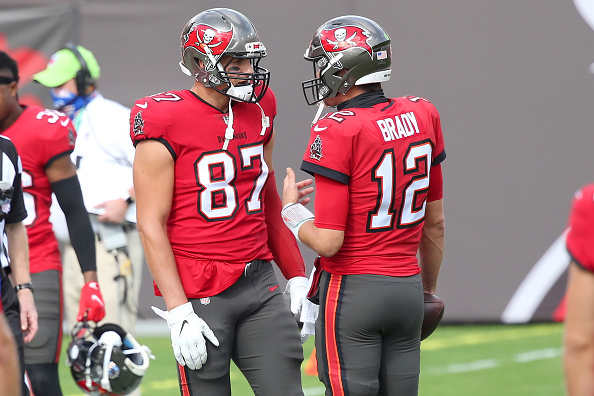Josh Elias | May 23rd, 2019

Surprise, surprise. The Golden State Warriors are in the Finals again. I’m not sure there’s a person on the planet that could have credibly predicted anything else, and that can’t be said about any other team in history aside from the 1960s Boston Celtics. Don’t get me wrong, it’s absolutely a legendary feat to make the NBA Finals five consecutive times and it deserves plenty of recognition, but it isn’t exactly surprising, is it? Everyone likes an underdog story, and while this Warriors dynasty started out as one, it’s been a long time since that’s the case. So instead, I’ll focus on one specific player that I personally believe is possibly the biggest underdog story in the league – Alfonzo McKinnie.
Certain cities have had an invariably significant impact on the NBA. Los Angeles, California. Philadelphia, Pennsylvania. Brooklyn, New York. Akron, Ohio. Recently, Melbourne, Australia.
Chicago, Illinois. Chicago’s particularly interesting because it really didn’t have that much of an impact for much of the NBA’s early history. Like Akron, a city less than a tenth its size, and Melbourne, a city halfway across the world.
Except Chicago is the third-most populous city in the country, and in fact, at the time of the NBA’s founding, ranked second.
Now, from the very beginning of the NBA, Illinois has produced some of the biggest stars in the league, from George Mikan to Andy Phillip to Harry Gallatin. All three were members of the league from the NBL-BAA merger, and all three are in the Hall of Fame. All three were also born in cities other than Chicago.
The city proved unable to manage to keep ahold of a team despite its population, too. The Chicago Stags were a founding member of the NBA after three years in the BAA and had winning records in every season of its existence. They had a clear star in Max Zaslofsky, who represented a key part of the Chicago community by being the first widely accepted Jewish basketball star. (Zaslofsky was also a one-and-done player in the 1940s, which is ludicrous to think about considering the efforts Spencer Haywood would have to go through over 20 years later to attempt to leave school early for the NBA.) Despite all of that, the team went bankrupt after four years.
It took over a decade before they were awarded the league’s first-ever expansion team. Despite the roster presence of two consecutive Rookie of the Year recipients, including Hall-of-Famer Walt Bellamy, the Chicago Packers/Zephyrs lasted just two years before moving to Baltimore, and eventually Washington. It wasn’t until 1966-67, nearly two full decades after the league’s founding, that the city actually got a team that would stay.
Chicago’s first basketball star was Red Kerr, and he went on to become an NBA Champion, a three-time All-Star, and the first coach of the Chicago Bulls. He spent most of his life after that working with the Bulls. Their second basketball star was Lee Schaffer, who was a key piece of a contender and an All-Star by his second NBA season and was out of the league, voluntarily, half a year later. After suffering a broken leg, he decided to retire at just 24 to join a trucking company in North Carolina.

So, basically, Chicago’s introduction to the NBA was off to a bumpy start, from many perspectives.
It took until 1979 before the first Chicagoan future Hall-of-Famer would be drafted in Maurice Cheeks, and it even took him until just last year before he was inducted. In the many years since Cheeks though, Chicago’s influence over the league has been unstoppable.
Isiah Thomas. Mark Aguirre. Terry Cummings. Doc Rivers. Kevin Duckworth. Jeff Hornacek. Hersey Hawkins. Tim Hardaway. Juwan Howard. Michael Finley. Antoine Walker. Shawn Marion. Corey Maggette. Dwyane Wade. Tony Allen. Andre Iguodala. Derrick Rose. Anthony Davis.
All from the Windy City.
McKinnie is also from the Windy City, although his hype coming out of high school wasn’t exactly on the level as guys like Rose and Davis were in recent years. Even in well-known basketball circuits like Chicago, for players to get noticed on that level as a high-schooler, your numbers have to practically be reminiscent of Wilt Chamberlain. Anthony Davis averaged approximately 32 points, 22 rebounds, and seven blocks as a senior. Derrick Rose averaged 25 points, nine rebounds, nine assists, and three steals. Davis was considered the best player in the country. Rose was ranked fifth.
A large part of Chicago hoops in terms of what’s been represented in popular culture comes down to the 1994 documentary Hoop Dreams. That movie followed around two of Chicago’s top high-schoolers, William Gates and Arthur Agee. Neither of them made the NBA, although both came close. A large part of the film focused on how Agee’s financial situation meant that he was forced to go to an inner city school that wasn’t particularly adept at basketball historically, which made it hard for him to get noticed until they massively overachieved in the state playoffs. Even then, Agee only ended up at Arkansas State. That inner city school was Marshall Metropolitan High School, the same school McKinnie would end up at.
At the time of his graduation, the full list of Marshall Metro alumni that made the NBA was: George Wilson. Wilson played in the NBA from 1964 to 1971. He was a backup for all but one half of a season. Patrick Beverley would soon double that list, but at the time, he was still stuck in Piraeus, Greece, playing for Olympiacos and three years away from his NBA debut.
Even before taking that into account though, McKinnie’s senior season was markedly different from Rose and Davis, and even from fellow alumni Agee and Beverley, who’s 37.3 points per game as a senior went so noticed that Agee himself set up a follow-up documentary to his own that focused on Beverley.
Even 37.3 points per game and a documentary wasn’t enough for Beverley to catch major attention, as he was the 59th-highest ranked recruit in 2006. Behind three fellow Illinoisans even, in Sherron Collins, Jon Scheyer, and Brian Carlwell. Collins played 66 minutes for the Charlotte Bobcats and Scheyer and Carlwell wouldn’t ever even make a training camp roster.
So, if nearly 40 points a game isn’t good enough to be a top recruit, what would you say about a player who averaged 11.2 points and 8.5 rebounds?
I mean, probably not much. It’s unlikely you’d ever notice him.
McKinnie was, per ESPN, the 196th-best power forward in the class of 2010. That placed him 158 power forwards below Memphis signing Hippolyte Tsafack, who, in addition to having one of the best names in basketball history, scored 15 points in three years of college basketball. And trust me, McKinnie would get much further away from the NBA than he was then.
McKinnie’s college career would begin at OVC school Eastern Illinois, whose most recent NBA player they’d produced, Kevin Duckworth, passed away in 2008, two years before McKinnie came to the school. His time there began with a 55-67 loss to South Dakota State, in which he went scoreless in nine minutes.

As the season went on, then-EIU coach Mike Miller (not to be confused with the Mike Miller that used to have a pet monkey and won a pair of NBA championships) quickly made it a clear goal to increase McKinnie’s versatility, as he often played him in any of the three frontcourt positions, but McKinnie was still very raw. The first time he scored in double-digits was a 14-point six-rebound outing against Division III school Anderson University. He scored more than eight points just one other time that year, compared to nine scoreless games. He averaged 3.5 points and 3.6 rebounds per game as a freshman on the 9-20 Panthers.
By his second year though, he was promoted to the starting lineup, primarily starting at center. He had a breakout game early in the year against Maine where he had 24 points and 14 rebounds, and while he never quite matched that production, he increased his averages to a respectable 10.2 points and 7.0 rebounds.
Miller was fired as head coach after consecutive losing seasons, and McKinnie chose to transfer afterward. He moved to Green Bay, where he tore his right meniscus twice during his transfer redshirt season and spent most of the next year recovering as well. By the end of his redshirt junior season, he had played just nine games in the past two years, back down to averaging 4.6 points and 2.8 rebounds in a bench role while still in serious pain. The one positive from his limited minutes that season was that he was successfully being turned into somewhat of a stretch four, shooting 6-13 from behind the arc after not attempting a single three-pointer during his time at Eastern Illinois.
With Green Bay star Alec Brown off to the Bakersfield Jam of the D-League before McKinnie’s senior season, McKinnie was expected to step up and take his place. Instead, he continued to come off the bench for the first half of the year before taking over the starting power forward spot in late December. Nonetheless, he continued to play below his standard and appear to not be fully recovered from his injury until early February. He averaged 8.0 points and 5.3 rebounds while shooting 32.8% on three-pointers, none of which is nearly enough to put a mid-major redshirt senior tweener-forward on NBA teams’ draft boards.
NBADraft.net is one of the most comprehensive sites that covers the NBA Draft and its various prospects. It’s been operating since 2000, and currently has profiles for prospects from the 2006 draft all the way to current high school sophomores. There are 6,311 prospect profiles active on the site. Nearly 90% of them went undrafted. McKinnie doesn’t even have a profile.
To me, what that means is that he probably would have gone undrafted in 2014 if the draft had been 600 picks long instead of 60.
What confirms that is where he ended up after his college career ended. He wasn’t one of the 360 players to get a summer league invite. He wasn’t one of the 174 Americans playing in Spain, the 604 in Germany, the 49 in Russia, the 193 in Italy, the 72 in Greece, the 102 in Turkey, or the 158 in the United Kingdom that season. He wasn’t one of the 351 to end up in the D-League. He wasn’t even one of the 1171 to play in the semi-pro ABA.
He spent the 2014-15 season playing for free in the second division of Luxembourg.
While national teams aren’t a perfect parallel to leagues, it should be noted that FIBA currently officially ranks the Luxembourg National Team at 97th, between Tahiti and Uganda.
Players who aren’t quite of the quality to play in the NBA often end up in weird places. Former Iona star Norvel Pelle is playing for Homenetmen in Lebanon alongside former Knick Nate Robinson. Glen Rice Jr. is currently plying his trade in central Argentina. Darius Washington, who in a past life played 18 games for the Spurs, spent the last season playing for a team called Rabotnički in North Macedonia. Former NBA Champion Gabe Pruitt most recently found himself in Mongolia.
But Luxembourg? Even compared to those countries, Luxembourg is a stretch.
In the same season that McKinnie was over there, there were four players in the Luxembourgish Total League that scored over 25 points per game. Evrik Gary, Everage Richardson, Brad Reese, and Reggie Evans (and no, optimist, it’s not the NBA Reggie Evans).
Gary and Evans were both stars in DII fresh out of their senior seasons. Reese was a former Texas Tech star who struggled in the second division of Spain before making a short career for himself in the Czech Republic and Finland. He ended up in Luxembourg only once a serious injury threatened to end his career. Richardson’s pre-Luxembourgian career consisted of a sixth man role at Coastal Carolina University, four years in the German fourth division, and one year in the German third division. These were the best players in the country.
Richardson is the only one still playing professionally, in the second tier of Icelandic basketball.
McKinnie was so far away from the NBA that he was in the division below those four guys. McKinnie played for East Side Pirates aus Berbuerg-Waasserbëlleg, one of the worst teams in the amateur second division Nationale two.

The Pirates don’t even have a Wikipedia page, nor does the league that they’re in. Their official website consists entirely of their logo, a link to their Facebook page – which has just 586 likes, a misspelled link to their practice schedule, a link to the country’s federation, and a pair of email addresses.
McKinnie averaged approximately 26 points and 16 rebounds per game, good enough for him to come back somewhat closer to home and play in a Mexican summer league whose most recognizable names at the time included Jumaine Jones and Ashton Gibbs. A childhood friend of his, Emmanuel Little, helped recruit him to the Rayos de Hermosillo, and he helped the team to the championship game, with 15.4 points per game and 7.3 rebounds per game.
Following that season, he took the summer to represent the USA in the 3×3 World Championship alongside fellow Chicagoans Stefhon Hannah and Myke Henry, where they took home the silver medal.
While that performance put him on the map somewhat, he still was far from being seriously on NBA teams’ radar, as that tournament is such a different setting from any 5×5 basketball, let alone the NBA.
Which meant the next step was to pay the $175 fee to try out for the G League. Players who attend open tryouts rarely make the league, but McKinnie was determined to be the exception, and, surprisingly he was.
He made the cut, debuted for the Windy City Bulls with 16 points and 11 rebounds in his first G League game, and couldn’t be stopped from there. He was named an All-Star, and a year later would receive his first NBA contract from the Toronto Raptors, becoming just the third player to make the NBA after entering the G League through open tryouts (after Jonathon Simmons and David Nwaba).
His first game with Toronto, where he played a grand total of 74 seconds, enough time for him to accumulate zero stats of any sort, was a different story, as was the entire season. He spent most of the year assigned back down to the G League again, averaging 1.5 points and 0.5 rebounds in the 14 NBA games he actually was given minutes in. By July, he was waived.
By the fall, he was a member of the defending champions. The Warriors signed him to a two-way deal, and converted him to a full contract during the preseason – a preseason where he played 18.6 minutes per game, averaging 6.6 points and five rebounds.
On October 29, in a blowout win over the Bulls in which Klay Thompson scored 52 points, the third-leading scorer, behind Thompson and Stephen Curry, was not Kevin Durant. It was McKinnie, who produced 19 points and 10 rebounds off the bench.
By January 31, in Thompson’s absence, McKinnie was given his first NBA start. And four months later, he was earning serious minutes in the Conference Finals. 17.5 per game.
In the Game 4 comeback that completed Golden State’s sweep of Portland and sent them back to their fifth straight Finals, the Golden State starting lineup consisted of future Hall-of-Famers Curry, Thompson, and Draymond Green, Jordan Bell – who would play just 14 minutes that game, and McKinnie. McKinnie played 26 minutes and 23 seconds. He scored 12 points, the third-most of his NBA career. And the Warriors won by two.
McKinnie is heading to the NBA Finals.
Potentially as a starter.
Three years after playing in the second division of Luxembourg.
Follow Us on Twitter @thescorecrow
Follow Us on Reddit at u/TheScorecrow
Follow Us on Facebook at The Scorecrow
Follow Us on Instagram at The Scorecrow
Follow Josh Elias on Twitter @thejelias
Main Credit Image: Jose Carlos Fajardo, Bay Area News Group






